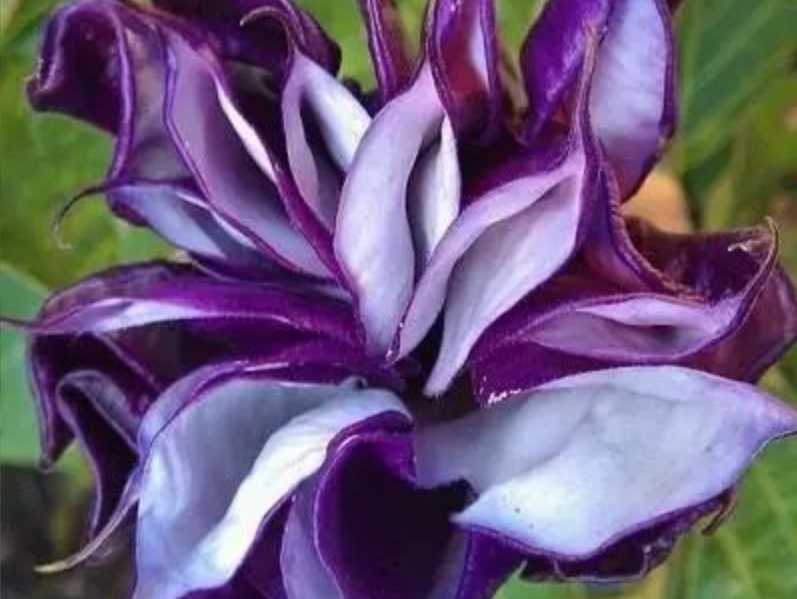The Datura, commonly known as Jimsonweed or Angel's Trumpet, is a genus of flowering plants that has captivated and cautioned humanity for centuries. Native to the Americas, these annual or perennial herbs now thrive in temperate and tropical regions worldwide, blending striking ornamental appeal with inherent toxicity.
Source: Images from the Internet, if there is any infringement, please contact the removal of
Datura species are renowned for their large, pendulous flowers, which range from pure white to deep purple or pink. The trumpet-shaped blooms, often 10–20 centimeters long, emit a sweet, intoxicating fragrance at night, attracting moths and other nocturnal pollinators. Their velvety petals may be smooth or ribbed, with some varieties featuring intricate radial patterns. The plant’s foliage is equally dramatic: broad, ovate leaves with toothed edges and a slightly sticky texture, often tinged with purple veins. Following blooming, Datura produces spiny seed capsules that burst open to release hundreds of dark seeds, symbolizing both fertility and the plant’s hazardous nature.
Throughout history, Datura has played a complex role in human culture. Indigenous peoples used its psychoactive alkaloids—including atropine, scopolamine, and hyoscyamine—in shamanic rituals, believing the plant facilitated communication with the spirit world. However, these compounds are highly toxic, causing delirium, hallucinations, and even death if ingested. In traditional medicine, Datura was used externally for pain relief but remains strictly regulated due to its risks. Today, the plant’s allure persists in horticulture, where it is grown for its dramatic flowers in moon gardens or wildflower borders. Yet gardeners are warned to handle it with care, as all parts of the plant are poisonous to humans and animals. As a symbol of beauty intertwined with danger, the Datura stands as a botanical reminder of nature’s dual-edged sword.
